If you wish to learn calligraphy from an expert, Peter provides professional and enjoyable lessons and classes in modern and traditional calligraphy styles, and gold leaf illumination tuition, at his Peter Taylor’s Calligraphics studio in Brisbane …or anywhere worldwide.
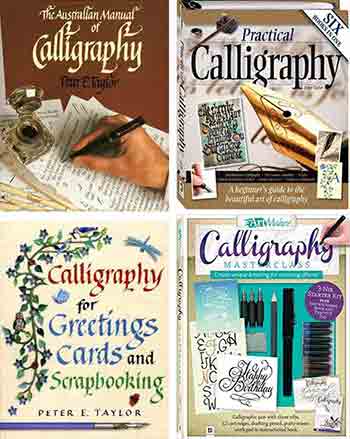 He is the author of ‘Practical Calligraphy’ pub. Hinkler Books in 2010 (with chapters from it included in ‘Calligraphy Masterclass‘ pub. 2018), ‘The Australian Manual of Calligraphy’ pub. Allen and Unwin 1987 and ‘A Manual of Calligraphy’ pub. HarperCollins/Unwin Hyman 1987, ‘Calligraphy for Greetings Cards and Scrapbooking’ pub. GMC 2012 …with other works in progress.
He is the author of ‘Practical Calligraphy’ pub. Hinkler Books in 2010 (with chapters from it included in ‘Calligraphy Masterclass‘ pub. 2018), ‘The Australian Manual of Calligraphy’ pub. Allen and Unwin 1987 and ‘A Manual of Calligraphy’ pub. HarperCollins/Unwin Hyman 1987, ‘Calligraphy for Greetings Cards and Scrapbooking’ pub. GMC 2012 …with other works in progress.
Many skills can be learned from Peter’s books, although an immense advantage is gained by having an expert personally guide you. Make yourself at home in Peter’s studio, relax and immerse yourself in the craft, explore and handle pages from original medieval manuscripts, some dating from 1280 and earlier…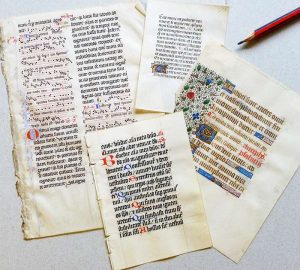
Lessons for adults and children (aged 10 and up) are offered on a wide range of styles and techniques, which will be adapted to your needs. Peter loves teaching absolute beginners who have not held a calligraphy pen before as much as those with experience who wish to refine their skills.
Costs:
- Private tuition in the studio is $70 an hour for one person.
- For 2 students – $80 an hour, the time and lesson cost can be shared between you and a friend or relative, if you wish – $40 each.
- All materials are supplied and equipment loaned as necessary.
- A gift voucher for lessons can easily be provided, too.
- Email me for a quote: Workshops and practical courses for larger groups of up to 20 people can also be arranged if you are able to supply the attendees and the venue (eg. schools, societies, clubs, craft groups, summer school, professional development, workplace). The charge will be negotiated and depend on duration, travelling time, topic, number of people and the materials that need to be provided.
Calligraphy Lessons
Peter’s aim is to help you to enjoy calligraphy. WARNING – Calligraphy can become addictive!!! You may just want to have fun with a pen, and that’s fine …but if you really wish to become a serious calligrapher, Peter is eager to divulge and teach every single trick and technique that he has learned, used and developed. It’s important that the next generation of calligraphers learn properly from an expert, no matter who that may be.
Try it out
Let’s knock one myth on the head…
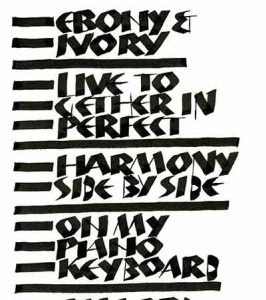
Neuland – a modern writing style
You don’t need to have good handwriting to do calligraphy well…
…but a willingness to slow down helps. Calligraphy is about drawing letters. Each letter is a drawing of the shape that you believe is the ideal design and you place it with care to create a pleasing outcome …no matter what it takes. This can mean that some individual letters are built from a number of separate pen strokes. Some styles can be modified later to become handwriting.
Just to see if you like calligraphy, you are welcome to do an introductory standalone three quarters of an hour session on the basic principles – the different choices of pen, associated techniques and the breadth of possibilities …along with learning a modern simplified Neuland hand. Let’s be honest – some left-handers struggle with a number of scripts, but not all left-handed people! The former assistant to the Queen’s Scribe is left-handed, and she is an excellent and famous calligrapher who writes beautifully in all styles. Her name is Gaynor Goffe. An introductory session may help ease your mind that writing in calligraphy is possible!
Making a good start
If you know you want to learn calligraphy, there is no need to do an introductory session before starting to learn a style based on a historic script.
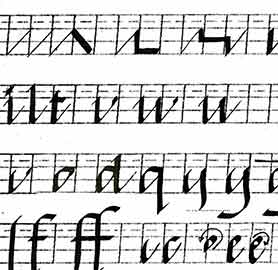
Italic taught with a grid

Basic Italic writing style
It’s best to choose one style and learn and practice that for 2 – 3 months before starting another one. Italic is the most popular writing style for beginners to learn first.
This is because it can be used for writing formally on important certificates, presentations and invitations, as well as for flowing poems and casual greetings cards. It can later be flourished and have decorative tweaks added, and turned into handwriting …if you choose . Learning Italic takes most people four or five one hour lessons of private tuition (with practice between sessions), or 6 or 7 working hours for adult groups.
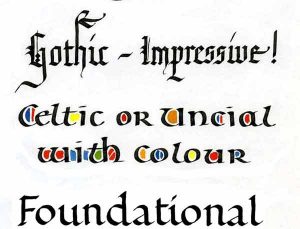 But if you prefer the look of Gothic, Celtic or Foundational Hand, they are perfectly suited to beginners, too, and take about the same time to learn as Italic.
But if you prefer the look of Gothic, Celtic or Foundational Hand, they are perfectly suited to beginners, too, and take about the same time to learn as Italic.
Learning a second script doesn’t take as long as learning the first one.
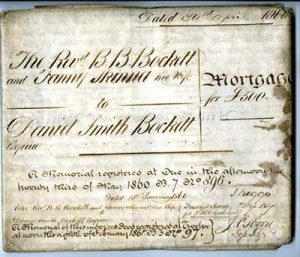
Copperplate (top left) on an old document
All these styles require you use a pen with the tip of the nib shaped like chisel. Once you’ve learned how to hold the pen, the thick and thin parts of letters come automatically according to the direction the pen nib is moved.
Modern Calligraphy is based on Copperplate handwriting, but with some of the rules relaxed and allowing freedom to add your own touches. Modern Calligraphy is currently very popular as a first writing style as it’s great for adding names to invitations and greetings cards and impressing your friends …as well as being fun and relaxing to write. Both it and Copperplate require a fine pointed and flexible dip-nib, a special holder and a supply of ink (Pelikan 4001 black ink in a bottle and a Nikko G nib are personal favourites …and an oblique penholder made by Speedball is the easiest variety to find in art stores). The nibs are particularly well priced at Manga Arts in Victoria. As well as steering the nib to create the letter shape, you also vary the pressure on the nib – the harder you press, the wider the letter stroke becomes.
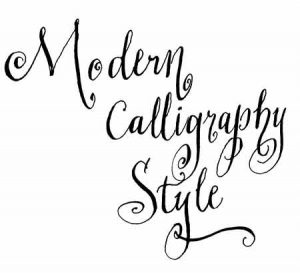
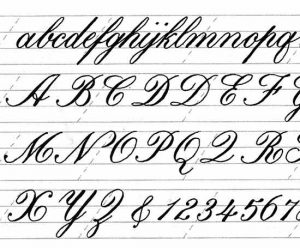
Copperplate tuition grid
Though Peter completes most commissions in scripts other than Copperplate, he can certainly teach this style and Modern Calligraphy.
Other options
Some of these topics for study or a workshop take more than one hour of tuition.
Fun Lettering
Not all alphabets have to be serious and useful for important documents. Peter can teach a range of fun styles to children, card-makers, scrapbookers and others who wish to explore the creative design and use of letters.
…And for those wishing to learn the finer points of calligraphy and expand their skills…
Moving on
Italic 2 – for those who have completed a course or workshop in basic Italic
An introduction to adding flourishes and decoration to letters, as well as writing in colour.
Make Your Own Pen
Pens made from reeds and bamboo have been used for centuries to produce the finest results. They can also be shaped to suit the way that makes writing easiest for you, made cheaply in a range of sizes and they are a joy to use. We will also make pens from Balsa wood and experiment with them to construct impressive decorative letters in colour.
Layout and Design
This tuition mainly concentrates on the design options for laying out poems, invitations, presentations, advertisements and other common tasks calligraphers may be asked to or wish to do. It also teaches writing on curves and gives ideas for easy ways to create monograms. Writing expertise is not a pre-requisite.
Working with Colour and Gold – an introduction
You will learn the best ways to write in pure and blended colour on white and dark coloured papers and write with gold paint in a ‘dip nib’. Ideas will be provided for a range of ways to add colour to your calligraphy. Though it is likely that most attendees will have some experience in writing in calligraphy, this is not essential and expertise is not presumed. You will also apply 23ct gold leaf! A small additional materials fee applies as well as the normal hourly tuition cost.
Embossing, Resists, Carving and Rubbings
These techniques are particularly suited for creating headings and greetings cards – but creative people will use them for a wealth of purposes. No calligraphy skill is expected.
Cut Letters
Pop-up, bend the flap, see-through, cut out, stick-on, 3D… A selection of designs will be supplied for you to experiment with. No calligraphy skill is expected.
Painting for Calligraphers
Produce a decorative letter with a trail of leaves and flowers and maybe add some wildlife. You can frame your finished work of art, but you will be able to adapt this idea for letters to start poems and for the creation of borders. Designs will be provided, so no prior skills are required. This teaches the use of fine brushes, pointed pens and the principle of trailing borders.
Medieval Illumination
You will create a painted capital letter in 14th century style, with blended colour and fine white line decoration, a 23ct gold leaf background and a mixture of leaf and flower designs from the period. This will enable you to copy any designs that you see in a picture of a medieval manuscript or devise your own. This workshop focuses on painting techniques and drawing skills, and no prior experience is required. A small additional fee applies.
‘White Vining’
You will use 23ct gold leaf produce a copy of a medieval letter and paint a multi-coloured background using different strengths of paint, leaving plant trails in the colour of the paper. A modernised version will also be produced and this will enable you to design similar letters for yourself. You will want to frame your results! This is a stand-alone workshop and no prior experience is needed. A small additional fee applies.
For those aiming to become experts
This series of workshops offers a choice of new styles and variations to standard ones to add to your ‘calligraphy tool box’ of useful techniques. Though not absolutely essential, most attendees will have used a calligraphy pen before and written in at least one basic style.
Roman Capitals – painted and pen written
These letters have been the foundation stone of all our Western alphabets. An understanding of their construction will improve your ability to draw elegant letters in a wide range of styles.
Drawing Versal Letters
The principles of versal letter construction will be emphasised so that you can design letters to accompany medieval and modern scripts or use them on their own.
Modern Versals
Though similar versals can first be drawn as outlines and painted, the letter shapes in this class will be built up from pen strokes.
Carolingian Old and New
Elegant and rounded, variations of Carolingian scripts can provide a formal look or a more cursive appearance, as in ‘Running Book Hand’.
Decorative Capitals for Celtic
Few people can construct letters with the same number of knots and intricacies that the early illuminators used. These letterforms, based on the proportions of the originals, provide fitting alternatives.
Celtic with Tweaks
Peter will teach you how the monks drew their letters in ancient times and also some useful simplified versions.
Celtic with Changed Features
There are many ways that Celtic features can be built into modernised scripts to make them stylish. This alphabet has plenty of character for use in a variety of calligraphic artworks.
Italic with oomph and pizzazz
Learn tweaks and modifications that can change the appearance of Italic to give you added ‘colours’ to choose from in your palette of alphabets.
In a previous life, Peter taught art and science in schools for over 15 years. He is a ‘Blue Card’ holder allowing him to work with children. School classes can be handled with suitable content chosen for the age. These can be ‘one off’ appearances or a continuing program, or a residency, and adults are welcome to participate.
In-service training for teachers can also be provided.
As a past Coordinator of the Society of Children’s Book Writers and Illustrators, Peter can also talk or instruct about Writing and Illustrating Picture Books; Visual Literacy; Book Cover Design; the History of Books and other topics as well as teaching the crafts of: Calligraphy and Illumination; Artist’s Book Construction; Creativity with Paper; Papermaking; Bookbinding.

